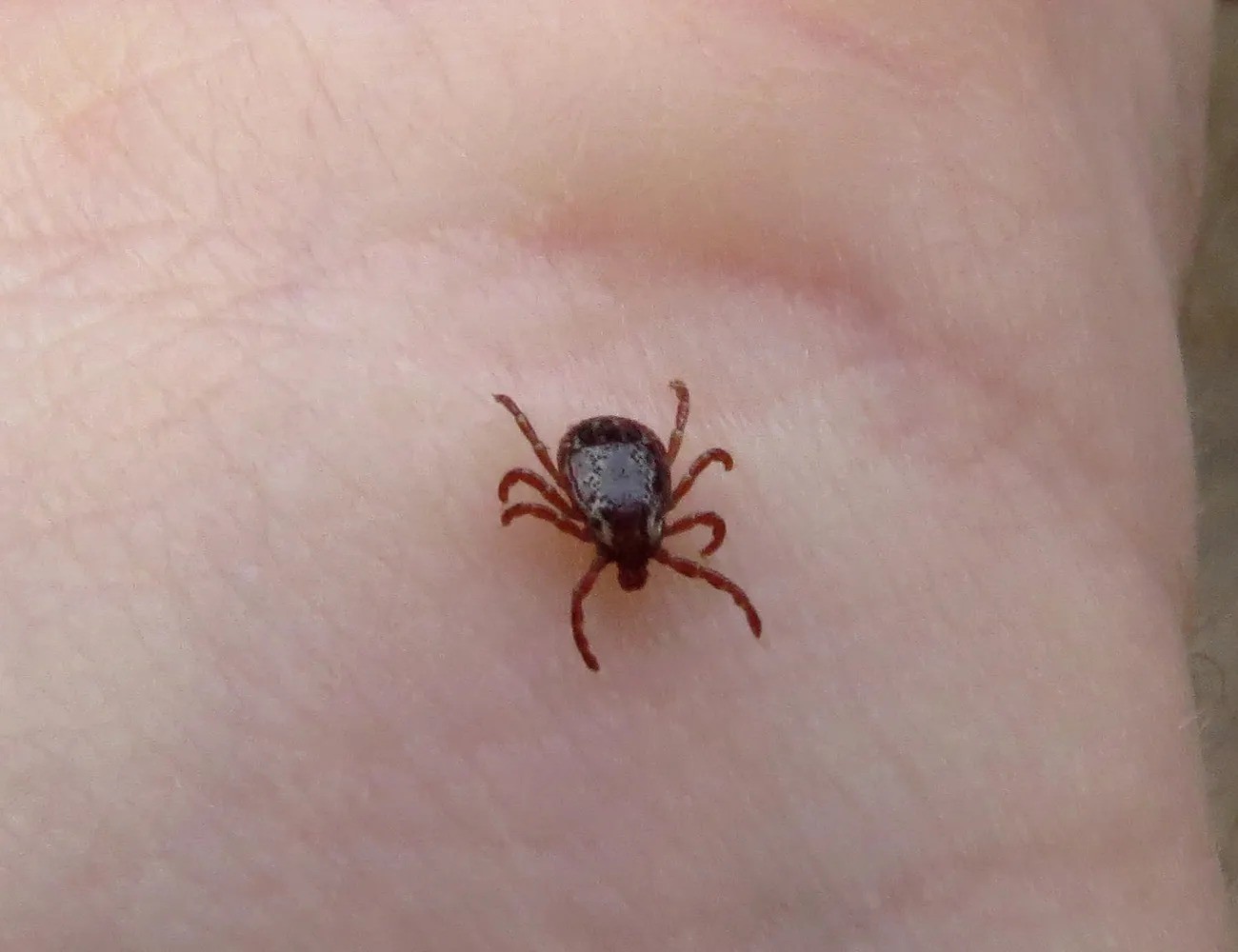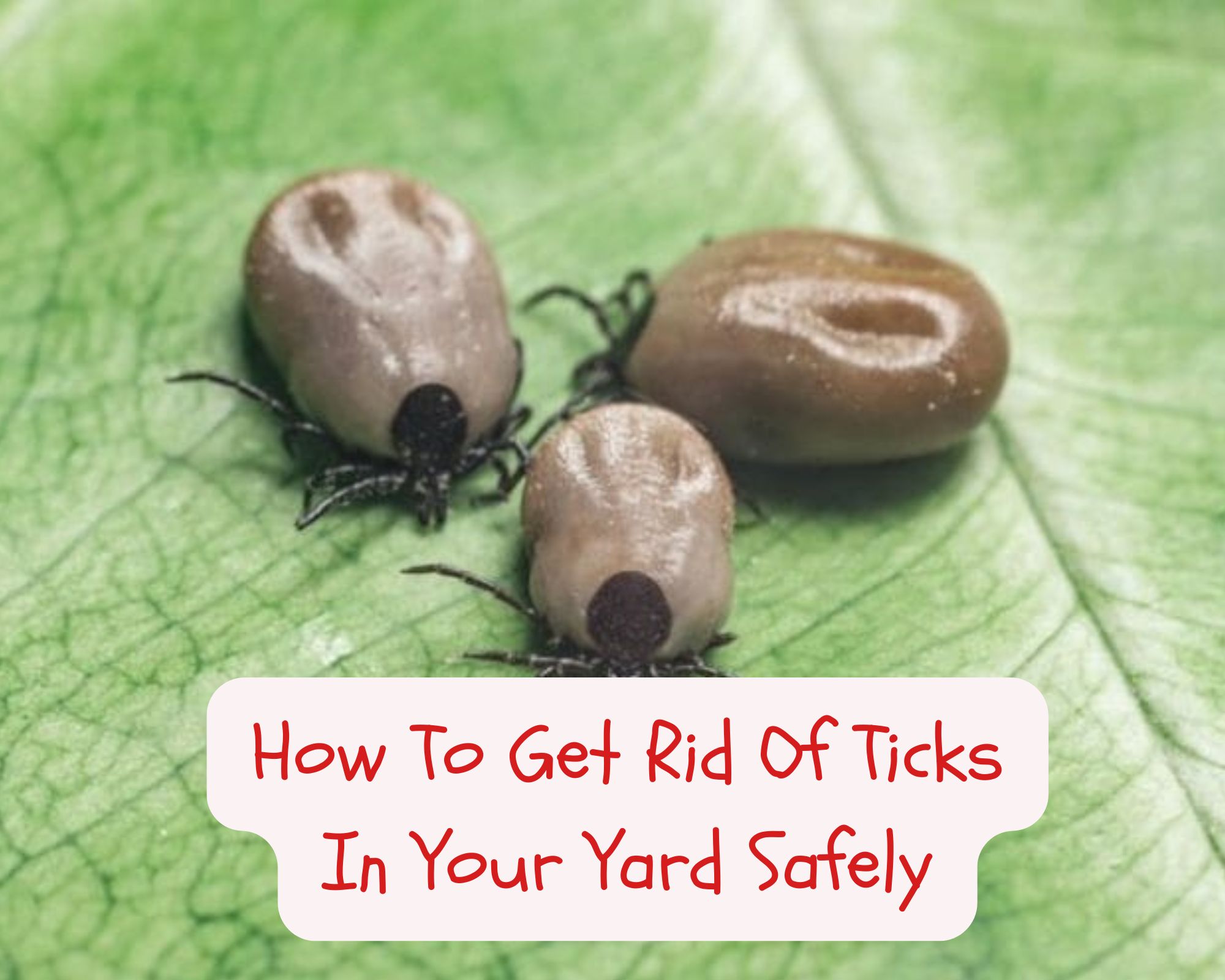Among the tiny creatures of this world, I’m not too fond of ticks. These blood-sucking arachnids are not only physically unappealing but also transmit diseases like Lyme disease and tularemia. Unfortunately, these nasty tiny critters thrive in tall grass and wooden areas, making your yard an ideal habitat.
However, you cannot let ticks live in your yard, so getting rid of them should be a priority. Fortunately, you can employ different eradication strategies, and you don’t even have to turn your yard into a war zone.
Which ones should you choose, though? Find out below.
Why Do I Have Ticks In My Yard?
Not every yard has ticks, so you probably want to know why yours has them. The truth is, there are multiple reasons for their presence in your yard.
These are:
1. Pets & Wildlife
Do you let your pets, particularly dogs and cats explore outdoor spaces? This could be the reason ticks live in your yard.
When pets roam through tall grass, bushes, or wooded areas, ticks can latch onto their fur and skin. Your pets will then carry them into your yard. Besides your pets, wildlife can also introduce ticks to your yard.
Common wildlife that can carry ticks include deer, rodents (such as mice and squirrels), rabbits, birds, and even larger animals like raccoons or opossums.
Your yard becomes more accessible to wildlife and, in turn, ticks, especially if it is located near wooded areas, fields, or other natural habitats.
2. Tall Grass And Vegetation
Ticks thrive in humid, shady areas and don’t do well in direct sunlight. In that case, the vegetation and grass in your yard is crucial for their survival.
Tall grass and dense vegetation provide a sheltered and moist environment, which ticks prefer. This cover protects them from extreme temperatures and desiccation, allowing them to survive and reproduce more effectively.
Moreover, this vegetation makes it easier for ticks to find hosts through “questing” behavior. They climb to the tips of grass blades, shrubs, or low-lying branches and extend their legs to grasp onto passing animals or humans.
Also, besides providing an excellent questing location for ticks, tall grass also attracts hosts. Tall grass and vegetation attract small mammals, birds, and deer seeking food or shelter. These animals are ticks’ hosts; they latch onto them as they pass.
Also Read:
3. Moisture
Ticks thrive in summer and spring for a reason: high humidity and warm temperatures. Ticks require a certain level of humidity to thrive, and moisture-rich environments provide them with the necessary conditions for survival, development, and reproduction.
These arachnids get dehydrated pretty quickly; that’s why they are adapted to conserve moisture and become more active when humidity levels are high.
Moisture in the environment helps them to remain hydrated, enabling them to survive longer and be more active, increasing their chances of finding a host to feed on.
The moisture in the environment is essential for the development of tick eggs by allowing them to remain viable and hatch successfully. Humidity is also necessary for the nymph stage, as nymphs are more likely to be encountered by hosts when humidity is high.
Moreover, ticks are more likely to engage in questing when humidity is higher, as this helps them avoid desiccation and increases their chances of finding a suitable host.
4. Geographical Location
Your location will influence the types of ticks you are likely to encounter in your yard. Different tick species have adapted to thrive in particular climates, habitats, and regions worldwide. So, the kinds of ticks in your yard might differ from the ticks in other areas.
For example, the black-legged tick, a known carrier of Lyme disease, is more commonly found in the United States’ northeastern, Pacific coastal, and north-central regions. In contrast, the lone star tick is primarily found in the United States’ southeastern and eastern parts.
Also, ticks will likely be active throughout the year if you live in warmer regions but are limited to specific seasons in colder areas.
How To Get Rid Of Ticks In Yard

So, how do we get rid of ticks in the yard? Below are effective strategies:
1. Mow and Trim Regularly
Keeping your grass and vegetation short is a good place to start when getting rid of ticks, So mow and trim regularly. Keeping your lawn well-maintained creates an environment that does not favor ticks.
Short grass reduces their hiding places and makes it harder for them to quest for hosts.
Additionally, mowing and trimming expose ticks to sunlight, thus dehydrating and killing them. It will also help you detect their presence more easily and act swiftly.
2. Use Natural Remedies
Since eco-friendly, natural remedies for ticks are available, you can forgo the use of chemicals. Tested DIY options include:
a) Diatomaceous Earth (DE)
When diatomaceous earth powder sticks to a tick’s body, it will dehydrate and kill it, so consider spreading it in grassy and wooden areas and along fence lines. DE is safe for kids and pets but deadly against pests.
b) Cedar Oil Spray
Dehydrate, suffocate, starve, and disrupt the ticks’ pheromones using cedar oil spray. You can buy a pre-mixed tick spray made of cedar oil or make your spray. This remedy is effective, kid and pet-safe, affordable, and non-toxic.
Mix water, pure cedarwood oil (60 drops), and pure grain alcohol (1 ounce) in a spray bottle to make this remedy.
c) Eucalyptus or Neem Oil
It works the same way as cedar oil spray, so these strong-smelling oils will eliminate the ticks in your yard once they come into contact with them. Make this remedy by mixing purified water (4 ounces) and eucalyptus or neem oil (30 drops) in a spray bottle, then apply the mixture in areas with ticks.
d) Tick Tubes
They are a unique, non-toxic, eco-friendly form of tick protection, but what exactly are tick tubes? These are permethrin-soaked cotton balls treated cardboard tubes that you place within the proximity of pest activity. The pesticide in the cotton balls will get on the ticks, killing them.
e) Natural Tick Killers
Another option is to find natural tick killers in a store near you to kill them.
3. Try Pesticides
Significantly reduce the tick population in your yard using pesticides known as acaricides. These chemicals also help prevent re-infestation, particularly if you combine them with other prevention strategies such as habitat modification.
While effective, note that pesticides can kill beneficial pollinators and insects like bees. Furthermore, correct application is essential. Therefore, use the product only as directed, and pay attention to safety precautions.
Also, target areas you are likely to find ticks, such as tall grass, shrubs, and wooded edges. Moreover, avoid applying pesticides near water sources or in areas with sensitive ecosystems for the sake of our planet.
One more thing, wear appropriate protective clothing, including gloves, long sleeves, and pants during application.
4. Create A Tick-Free Zone
You may aspire to maintain a clean yard, but achieving this isn’t easy, especially if you have a huge yard. In that case, what’s the alternative? Develop tick-free zones in your yard to spend time with your loved ones.
Begin by removing tall grass, weeds, and dense vegetation, then create a barrier between your yard and wooded or grassy areas where ticks are more prevalent. Use wood chips, gravel, or mulch to create a dry and less attractive transition zone that ticks are less likely to cross.
5. Introduce Tick-Repellent Plants To Your Yard
Plant tick-repellent plants around common pathways and play areas since ticks cannot stand their pungent. The plants to consider include lavender, rosemary, marigold, lemongrass, garlic, and pennyrole. Besides keeping away ticks, this approach will help you beautify your lawn with stunning foliage and flowers.
6. Pet Care
It is necessary to regularly check your pets for ticks, especially if you let them go outside and take them to your vet for tick prevention strategies. Also, if your pets have outdoor kennels or resting areas, treat these spaces with pet-safe tick repellents or acaricides.
7. Eliminate Wildlife
Make your property less attractive to wildlife that encourages tick activity. For instance, reduce the deer population, which are ticks’ reproductive hosts, by planting roses, azaleas, and lilies.
8. Keep Your Yard Clean and Litter Free
Therefore, remove leaf litter, brush, and other debris from your yard to reduce their potential tick habitats.
9. Tick repellents
Since ticks can hitchhike to your home by sticking to your clothes and exposed skin, apply tick deterrents to these areas when spending time outdoors, especially in areas where ticks may be present. Use products containing DEET, picaridin, or permethrin, which are effective against ticks.
10. Keep Chicken
If you can, raise chickens to reduce the tick population and get fresh eggs too. You should also transform your yard into a bird-friendly area, as Robins and other birds feed on ticks.
Summary
Before ticks make their way inside your house from the yard, eliminate them using the above-discussed strategies. These elimination methods are effective and also kill other backyard pests like fleas, thus helping you transform your yard into a pest-free area.

Hey there, I’m Derek Schew, a writer for Lawnholic.com, where we cover everything and anything related to lawns. As someone who’s spent countless hours tending to my own lawn, I’m passionate about sharing my knowledge and helping others achieve the perfect yard. From lawn care tips to product reviews, I’m committed to providing our readers with the most accurate and up-to-date information available. So whether you’re a seasoned lawn enthusiast or just getting started, I invite you to join our community and discover the joys of a lush, green lawn.

